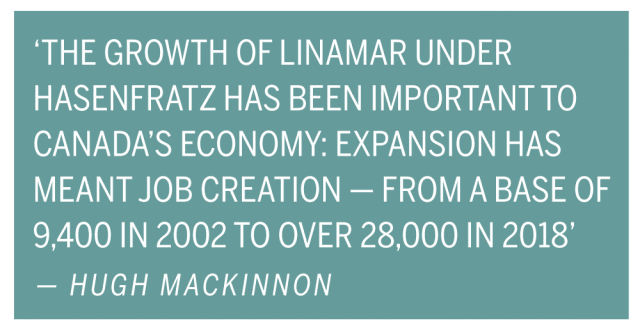BerlinAls ihm ein Berater vorschlug, über ein Investment in Metro nachzudenken, war Daniel Křetínský sofort Feuer und Flamme. „Ich bin ein Liebhaber von gutem Essen“, sagt er mit strahlendem Gesicht. „Und ich kenne Metro natürlich als Kunde, das Unternehmen hat eine großartige Marke.“ Deswegen war es für ihn auch sofort klar, dass er persönlich die mögliche Investmentstrategie prüfen würde.
Nachdem er sich mit einem kleinen Team in die Details vertieft hatte, sah er schnell die Möglichkeiten. „Die Digitalisierung bietet große Chancen für Metro, das haben viele noch gar nicht erkannt.“ Die heutige Bewertung des Unternehmens reflektiere nicht im Geringsten das Potenzial.
Nachdem Ende August bekannt geworden war, dass Křetínský bei Metro als neuer Großinvestor einsteigt, waren selbst Fachleute überrascht. In Erscheinung getreten war der tschechische Milliardär in Deutschland zuvor nur durch sein Engagement in der ostdeutschen Braunkohle. Doch welche Pläne der schlaksige 43-Jährige abseits der Energiebranche hat, war weitgehend unbekannt. Jetzt spricht er erstmals offen über seine Ambitionen.
Er wählt seine Worte genau, wenn er mit tschechisch gefärbtem Englisch über seine neueste Trophäe spricht. Schließlich besitzt er erst 10,9 Prozent an dem Großhandelskonzern Metro und braucht „noch etwas Zeit, um das Unternehmen und das Geschäftsmodell wirklich kennenzulernen“, wie er einräumt.
Mit den Optionen, die er sich gesichert hat, hat er die Möglichkeit, mehr als 30 Prozent an Metro zu erwerben – und damit sogar eine Komplettübernahme einzuleiten. Doch einen Zeitplan dafür habe er noch nicht, sagt er.
Mit Metro-Chef Olaf Koch hat er sich erst ein Mal getroffen und dabei außer Freundlichkeiten noch nicht viel ausgetauscht. „Ich freue mich, dass er Aktionär wird, und auf die Gespräche mit ihm“, sagte Koch nach der Begegnung etwas vage.
Denn so ganz weiß er offenbar noch nicht, was er von seinem Investor zu halten hat. „Die Motivation, die ihn zur Metro gebracht hat, kann ich nur anhand seiner bisherigen Aussagen interpretieren“, sagt er. „Aber er glaubt ganz offensichtlich an das Wertpotenzial. Ich auch“, macht Koch sich Mut.
„Ich sehe große Wachstumspotenziale für Metro“, bestätigt Křetínský. „Das Unternehmen ist im Wandel, es hat die Herausforderungen erkannt und darauf reagiert.“ Die Pläne des Managements, sich von der Tochter Real zu trennen, begrüßt er ausdrücklich. „Ich finde es sehr sinnvoll, sich auf den Großhandel zu konzentrieren“, sagt er.
Trotz des eingeleiteten Umbaus sei die Metro aber noch lange nicht da, wo sie hinmüsse, ergänzt er und macht keinen Hehl daraus, dass er sich ein größeres Tempo wünscht.
Křetínský weiß, wovon er spricht. Der Mann mit den kurz geschnittenen Haaren und der strengen, schwarzen Brille ist kein klassischer Investor, er ist eher ein Unternehmertyp. Sein Vermögen hat er nicht ererbt, sondern selbst erworben.
Sein Vater ist Informatikprofessor, seine Mutter Richterin. Er selbst hat in seiner Heimatstadt Brünn Jura und Politikwissenschaft studiert. Seine berufliche Karriere startete er 1998 bei der Anwaltskanzlei Gottweis & Partner in Brünn. Rasch jedoch schaffte er mit geschickten Investments den Weg in die Selbstständigkeit.
Er erwarb zunächst günstig Firmen
Sein wichtigster Vertrauter beim Aufbau seines Firmenimperiums ist der slowakische Geschäftsmann Patrik Tkáč, mit dem er viele gemeinsame Beteiligungen wie auch die Metro hält. Kennen gelernt haben sie sich bei der Investmentfirma J&T, wo Křetínský 1999 als Jurist einstieg und dann schnell Karriere machte.
Im Zuge der Privatisierung in Tschechien erwarb er günstig schlecht geführte Firmen im Energiesektor und machte sie in kurzer Zeit profitabel.
Heute zählt er nach Schätzungen des US-Magazins „Forbes“ mit einem Vermögen von rund 2,3 Milliarden Euro zu den zehn reichsten Tschechen. Allein sein Konzern EPH, eine Holding mit Dutzenden Tochterunternehmen aus dem Energiebereich, hat im vergangenen Jahr bei einem Umsatz von sechs Milliarden Euro einen Nettogewinn von 877 Millionen Euro gemacht. Ein weiteres wichtiges Standbein von Křetínský ist der Handel.
So hält er 40 Prozent am zweitgrößten tschechischen Onlinehändler, der Mall.cz-Gruppe. Über einen Mitinvestor bei Mall.cz, den tschechischen Milliardär Petr Kellner, hat er seine jetzige Partnerin kennen gelernt. Anna Kellnerova ist die 22-jährige Tochter Kellners und eine erfolgreiche Springreiterin.
Křetínský hält eine Beteiligung am Fußballklub Sparta Prag und baut sich zurzeit auch noch ein Medienimperium auf. So hat er Ringier und Axel Springer ihr tschechisches Joint Venture abgekauft, zu dem zahlreiche Zeitungen und Zeitschriften gehören. Aufsehen erregt hat vor zwei Wochen sein Einstieg bei der französischen Zeitung „Le Monde“, an der er jetzt zehn Prozent hält.
Zuvor hatte er in Frankreich bereits das Nachrichtenmagazin „Marianne“ gekauft und ist nun im Begriff, auch die Frauenzeitschrift „Elle“ zu übernehmen. Gebündelt hat er all diese Aktivitäten in der Czech Media Invest, an der sein Freund Tkáč 40 Prozent hält.
Křetínský ist nicht nur ein Workaholic, er ist auch sehr detailversessen. Deshalb fliegt er vier- bis fünfmal die Woche quer durch Europa, um nah am Geschäft zu sein. Er nutzt dafür stets einen Firmenjet – eins der wenigen Luxusgüter, die er sich gönnt, wie er betont. Geschäftspartner schwärmen nicht nur von seiner Professionalität, sondern auch von den Umgangsformen des stets korrekt in Maßanzügen gekleideten Geschäftsmanns.
Haniel-Chef Stefan Gemkow, der mit Křetínský über den Verkauf der Metro-Anteile verhandelt hat, beschreibt ihn als „hochprofessionellen Geschäftspartner mit scharfem Verstand“. Und er ergänzt: „Herr Křetínský war auch persönlich immer sehr angenehm, und wir hatten einen sehr sauberen Prozess.“
Auch wenn Křetínský noch an seinen Pläne für Metro arbeitet, eins ist klar: Ein stiller Teilhaber wird er nicht. Er hat Metro schon schriftlich mitgeteilt, dass er Anspruch auf eine Vertretung im Aufsichtsrat erhebt und dann auch Einfluss auf die Besetzung des Vorstands nehmen will. „Ich habe durchaus das Gefühl, dass er sich als Unternehmer bei der Metro versteht“, betont Haniel-Chef Gemkow. Daran lässt auch Křetínský keinen Zweifel.
Auch wenn es nicht seine Art sei, dem Management zu sagen, was es zu tun hat, wolle er sein Know-how beim Thema Digitalisierung einbringen, sagt er. Und es dürfte ein langfristiges Engagement sein. Er sagt: „Wir fühlen uns jetzt schon als Teil der Metro-Familie.“




